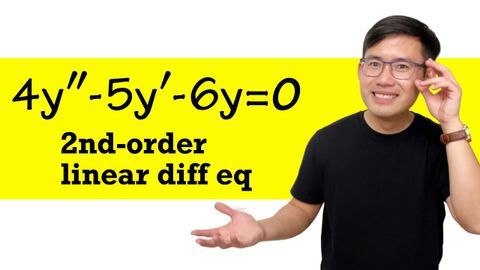定数係数を持つ2階均質線形微分方程式 (Second order homogeneous linear differential equations with constant coefficients)
劉愷傑 が 2024 年 08 月 17 日 に投稿  この条件に一致する単語はありません
この条件に一致する単語はありませんUS /əˈprəʊtʃ/
・
UK /ə'prəʊtʃ/
- v.t./i.近づく;話を持ちかける
- n. (c./u.)目的に近づく方法 : 道;交渉しようとして人に近づくこと;取り組み方 : 扱い方
US /ˈmʌltəpəl/
・
UK /ˈmʌltɪpl/
- adj.複数の;多様な;多発性の;多重の
- n. (c.)倍数;多数;倍率
- pron.多数
US /ˌsɪtʃuˈeʃən/
・
UK /ˌsɪtʃuˈeɪʃn/
US /ˈkɑnstənt/
・
UK /'kɒnstənt/
エネルギーを使用
すべての単語を解除
発音・解説・フィルター機能を解除
